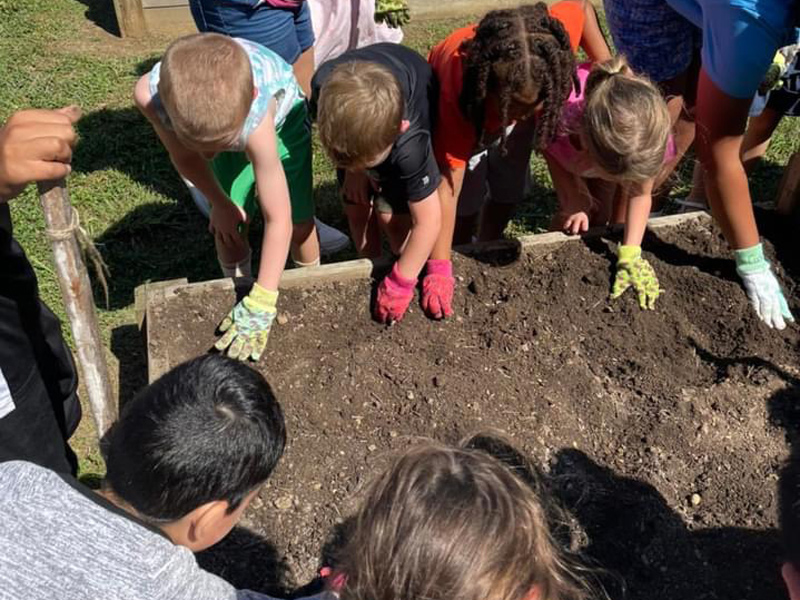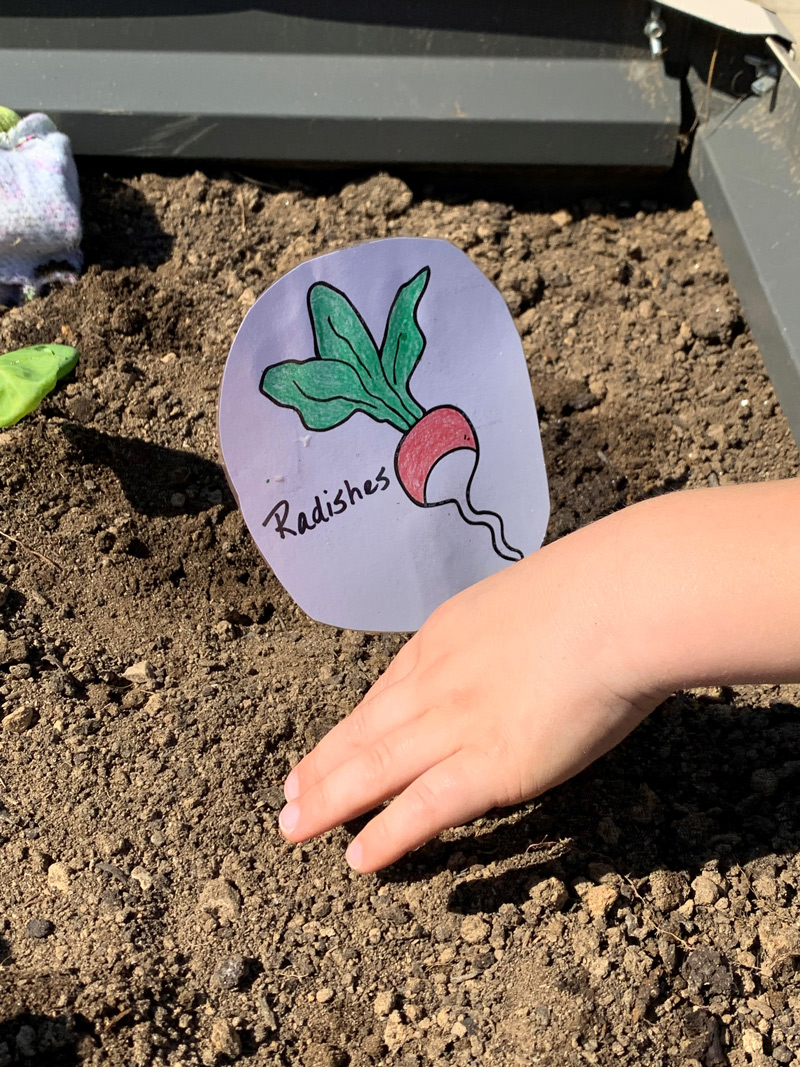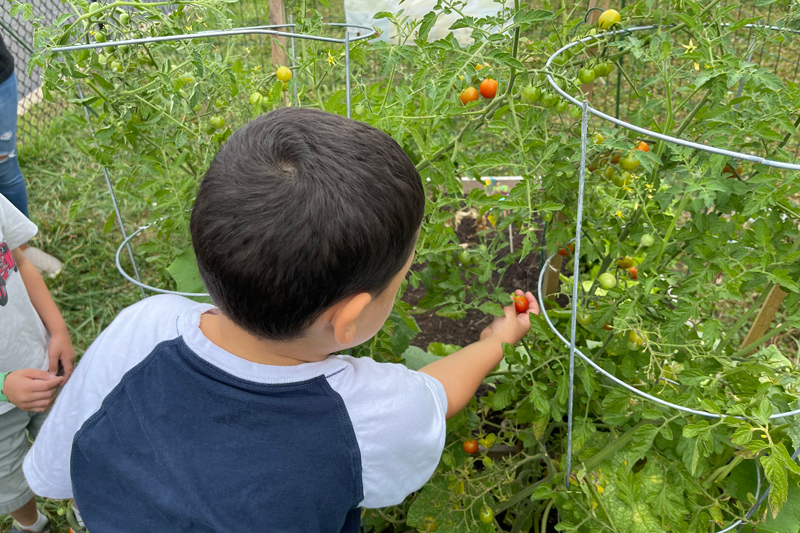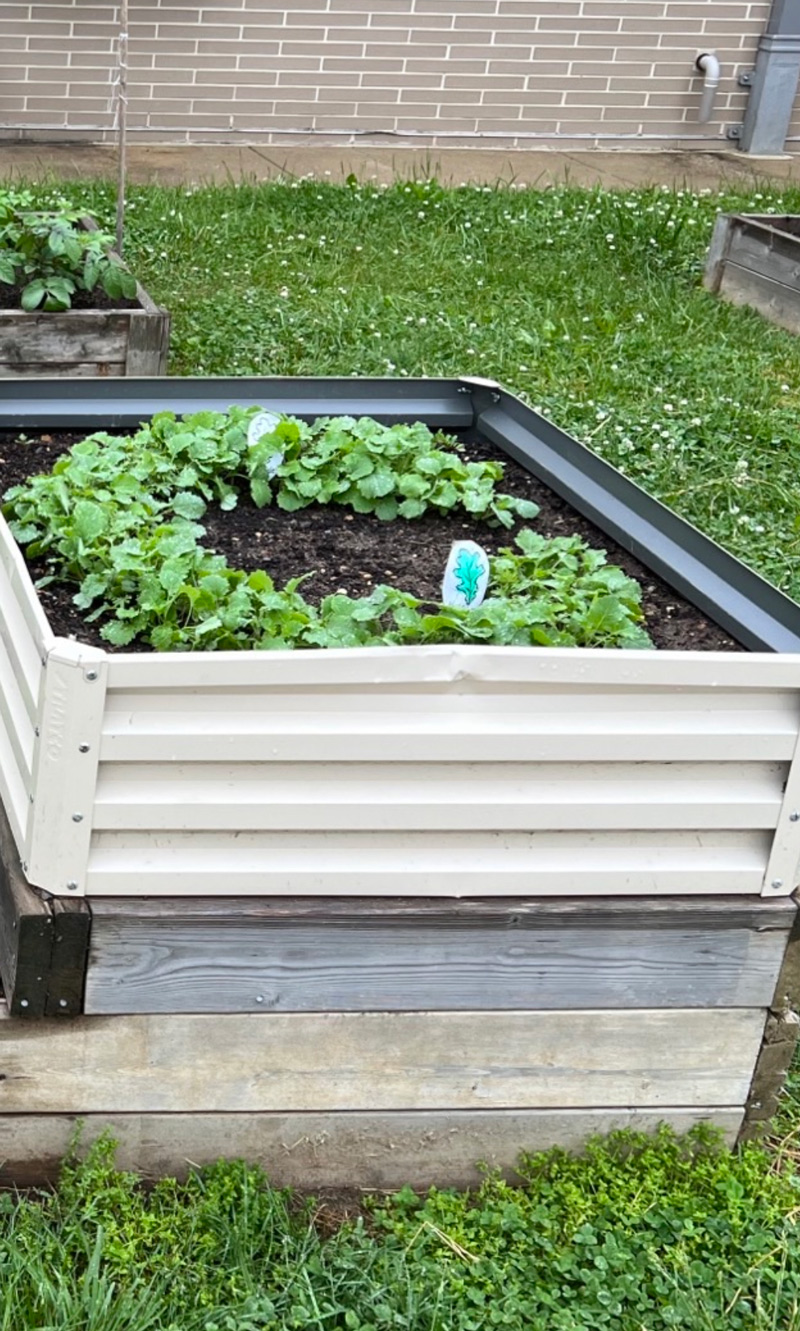


Dig into nutrition
Photos by courtesy of Gail Hermenau December 23, 2022
UD helps Red Clay School District take nutrition education to the garden
Children in Delaware’s Red Clay School District are discovering where their food originates with a new program from University of Delaware Cooperative Extension that aims to put a garden in every school in the district.
The “Red Clay School Gardens” program was crafted by the district’s Nutrition Services Department and Wellness Committee to meet the needs of the district’s younger students.

“One thing that the kids are missing out on these days is understanding where their food comes from, and the school garden really bridges that gap,” said Jessica Farrand, a nutrition specialist and district wellness chair with Red Clay School District. “Some of our kids assume that carrots come as little coins and don't realize that they're processed that way. It doesn’t just pop up on store shelves.
“We were finding through our needs assessments that the middle and high schools had health classes but in the elementary schools, there was no specific time where nutrition was taught.”
Several schools in the Red Clay School District already partner with Healthy Food for Healthy Kids on their school garden projects. For those that do not, the Wellness Committee had a vision. They wanted every school to have an opportunity to maintain a school garden and reached out to Delaware Extension’s Master Gardener program for help.
Cooperative Extension brings information about agriculture, family and consumer sciences, gardening and more to the citizens of Delaware. The Delaware Master Gardener program, one of Exension’s most well-known initiatives, boasts more than 300 volunteers and has been going strong since 1972.
It was a perfect match.
“The Master Gardeners have really bridged the gap of getting that expertise to the coordinators that we have at the school level and making the program possible,” Farrand said. “[That] combined with updated regulation information from the Department of Education which made a big push for farm to school — a push for school gardens.”
Cooperative Extension brings information about agriculture, family and consumer sciences, gardening and more to the citizens of Delaware. The Delaware Master Gardener program, one of Exension’s most well-known initiatives, boasts more than 300 volunteers and has been going strong since 1972.
It was a perfect match.
“The Master Gardeners have really bridged the gap of getting that expertise to the coordinators that we have at the school level and making the program possible,” Farrand said. “[That] combined with updated regulation information from the Department of Education which made a big push for farm to school — a push for school gardens.”

The Red Clay School District’s school garden program increases student awareness of our food systems and helps students develop basic gardening skills along the way. Additionally, it provides a nutrition education to students during the school day. Nutrition education begins in the classroom with third, fourth and fifth-grade students enjoying six in-class lessons from Extension nutrition educators. Topics include food groups, reading nutrition labels, understanding how digestion works, recognizing portion sizes and the importance of drinking water.
And, of course, getting the students’ hands in the dirt is an important part of the experience. The garden component takes the students out of their comfort zones and into nature. Paired with a certified Delaware Master Gardener, each group learns how to build their own raised garden beds on site. Master Gardeners serve as guides for the classes, helping select and plant produce that the students will monitor, care for and harvest themselves. Once the garden is well-established after the first year, the students and teachers take over regular garden maintenance.

Harvested produce — including cabbage, swiss chard, spinach, lettuce, radishes, beets and kale — is used in school cafeterias so students can get a taste of their success. As part of the program, volunteers create recipes and train cafeteria staff on how to incorporate these items into the menu.
“I always hope the children like [what we grow],” said Gail Hermenau, a Master Gardener who assists Cooke Elementary. “When I was just with them last week, I said to the kids, we're gonna plant some kale today; Has anybody ever had kale before? A lot of young students raised their hands. They're eating these vegetables.”
These heartwarming interactions highlight how hands-on programs help our children connect to the food they eat. One student from UD’s Early Learning Center was surprised at the various colors of their tomatoes, noting that “the big tomatoes are still green and the small tomatoes are red.” He then eagerly took a few small red tomatoes home to show his mother.
Participating schools include Brandywine Springs, Linden Hill, Richardson Park, Early Learning Center, Cooke Elementary, Cab Calloway School of the Arts, Mote Elementary and A.I. du Pont Middle School.
Contact Us
Have a UDaily story idea?
Contact us at ocm@udel.edu
Members of the press
Contact us at 302-831-NEWS or visit the Media Relations website

